Modular: Yggdrasill, the Roleplaying Game of “Viking Age” Adventure
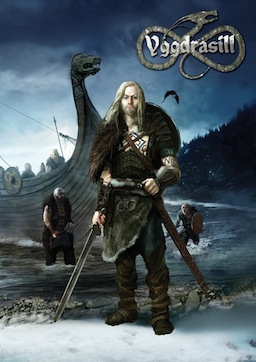 Routine visitors to this site might remember my survey of Poul Anderson’s works, a regular column that has been on indefinite hiatus for about two years now. Causes for this suspension have been 1. Anderson’s two-book Operation Chaos was an absolute drudge of a read, requiring a recovery period that only now might be over, 2. New responsibilities at home decreased available time for my recreational pursuits, 3. The time share for these recreational pursuits was almost wholly dominated by my weekly Pathfinder campaign, a campaign that now finally might be coming to an end.
Routine visitors to this site might remember my survey of Poul Anderson’s works, a regular column that has been on indefinite hiatus for about two years now. Causes for this suspension have been 1. Anderson’s two-book Operation Chaos was an absolute drudge of a read, requiring a recovery period that only now might be over, 2. New responsibilities at home decreased available time for my recreational pursuits, 3. The time share for these recreational pursuits was almost wholly dominated by my weekly Pathfinder campaign, a campaign that now finally might be coming to an end.
It’s unlikely that, with increased time, though, I’ll be returning to the Anderson survey. This is because I’ll move onto running other games, one of which already is underway: Yggdrasill.
At first glance Yggdrasill caters to a niche crowd, and I’m certainly a member of that company. I am a Norse-phile. Within my close community, I am nearly alone in my passionate interest — but for one dear friend, who identifies as Norse neopagan. When I first learned about the game just over a month ago, I knew that this “blood brother” would play the game with me. I also guessed that some others in my community would try it out, as well, and they have.
But as I consider just how many other areas of the globe might have the dynamic of interest that I enjoy, I question how viable a business project Yggdrasill might be. Perhaps I shouldn’t: Vikings appears to be a popular TV show; perhaps that series inspired some gamers to go “full Viking.” The “northern thing” clearly is a mainstay of traditional fantasy gaming, an aspect derived from popular fantasy fiction. But in most games where efforts are made to make the northern atmosphere “authentic” — well, they’re not actually “games,” per se, so much as they are campaign settings and supplements, productions such as Lands of the Linnorm Kings in Pathfinder’s Inner Sea setting for Golarion, and The Northlands Saga in Frog God’s Lost Lands setting, and both of these properties actually are about single regions within much larger campaign settings. But with Yggdrasill the northern thing is the whole thing, and that’s catering to a specific taste indeed!
And yet it seems to be working. Yggdrasill originally is published by a French company called Septieme Cercle (yes, follow that link for a gorgeous image! or check out this panoramic one here). It is translated into English and republished by England’s Cubicle 7, a company more recognizable for a host of other role playing games such as The One Ring (the current official Middle-Earth roleplaying game) and Doctor Who. In fact, it might be an interesting future article simply to go through Cubicle 7’s entire offering. I know very little about business, but Yggdrasill’s (and many other games’) success might owe something to the PDF revolution in game disbursement, a new paradigm in which digital products are sold direct to consumers from publishers or online “warehouses” like DriveThruRPG. I know that I have spent far more dollars in rpgs in the last year than I ever would have simply because of how much more affordable and convenient PDFs are. In fact, at long last now I can afford to read rpgs and their various supplements as leisure material! And yet others’ enthusiasm for the Yggdrasill game — at least in the English version — might be waning. I say this because the English offerings appear at least two publications behind the French catalog in what the companies are terming the “official campaign.” My French is nonexistent, but I would hazard to say that the two supplements not yet available in English are “The Children of Halfdan” and “Hrolf Kraki’s Saga” (a saga, incidentally, up next in the Poul Anderson survey, should I happen to resurrect it). As a last observation, I might be wrong about waning interest, for translation and publication, particularly for a company like Cubicle 7, with so many projects underway, might just take a long, long time.
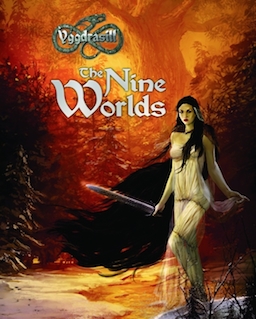 If one opens the Yggdrasill Core Rulebook and reads every word, every page, every chapter chronologically, cover to cover, one’s first impression might be that this book is much more a campaign setting than a rules set. The first seventy pages are exactly that, providing a summation of the Norse creation myths, a profile of the Norse pantheon of gods, and a description of how the Scandinavian peoples interacted with their gods. It also gives a lengthy articulation of the various regions of what Yggdrasill has named Midgardr (which is “Midgard” or “Middle-Earth,” as Yggdrasill with the two ls is the Old Norse proper noun form of “Yggdrasil,” the World-Tree of the cosmos). The regions detailed are essentially Denmark, Sweden, Norway, Finland, and some other nations, complete with descriptions of the principal figures and political situations in those land masses that have only tangential historical analogues at best. The writers make absolutely no apologies for the “historicity” of their product, in their introduction writing,
If one opens the Yggdrasill Core Rulebook and reads every word, every page, every chapter chronologically, cover to cover, one’s first impression might be that this book is much more a campaign setting than a rules set. The first seventy pages are exactly that, providing a summation of the Norse creation myths, a profile of the Norse pantheon of gods, and a description of how the Scandinavian peoples interacted with their gods. It also gives a lengthy articulation of the various regions of what Yggdrasill has named Midgardr (which is “Midgard” or “Middle-Earth,” as Yggdrasill with the two ls is the Old Norse proper noun form of “Yggdrasil,” the World-Tree of the cosmos). The regions detailed are essentially Denmark, Sweden, Norway, Finland, and some other nations, complete with descriptions of the principal figures and political situations in those land masses that have only tangential historical analogues at best. The writers make absolutely no apologies for the “historicity” of their product, in their introduction writing,
We were faced with a situation where we wanted to create an action-packed, heroic game set in the “Viking era”, but were finding the available historical source material less than inspiring. As a result, we decided to prioritise [English spelling] making Yggdrasill a fun and action-packed game above all, rather than one which was completely historically accurate. We decided to fill in some of the blanks ourselves, and even draw elements from different periods of the “Viking era”. We’ll probably be receiving letters from angry archaeologists for some time to come.
Having said that, we have done our best to respect the source material, and to maintain the spirit of the sagas and skaldic poetry.
In my view this certainly was the way to go. It remains to be seen just how much of Yggdrasill’s “Scandia” I’m going to use in my home game, but I certainly already have received much from the book’s observations on “Daily Life”, the Scandian cultures’ social organizations and conventions. As other reviewers have said, this material certainly has the ring of real historical authority. We would be remiss to quote this material in research papers, but man does it add depth and realistic immersion at the game table!
I should say now that the book is divided into about three parts in the following order: the campaign setting, the game system, and the campaign adventure. I’ve already commented on the setting, and here I will make some observations about the rules set. Do I ever love it! When one purchases a game like this one — a game so specific to setting and milieu — one naturally wonders just what the game mechanics contribute to that milieu. In other words, in Yggdrasill, the game mechanics should be designed to contribute specifically to the atmosphere that the designers would like to emulate. In Yggdrasill, this is action packed heroism in the “Viking era.”
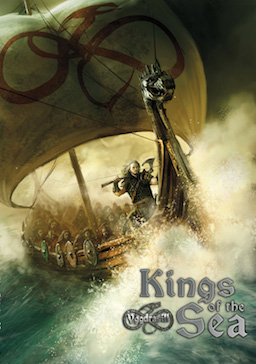 This system emulates this atmosphere by directing players to make “Skill Tests” of various difficulties by rolling 10-sided dice pools and adding bonuses from any relevant skills and situational effects. These dice are “exploding” — dice with a result of 10 automatically are rolled again, the resulting value added to the Test total. Yes, this means that a roll of another 10 would result in yet another roll, and possibly another, and so on… This simulates epic action with epic consequences, both for the player characters and the non-player characters. Another aspect of the game is a Feat system. They aren’t quite what one would expect from playing any iteration of D&D after Third Edition: in Yggdrasill Feats (and Magic) are bought with points at character creation. Experience points (in this game called “Legend Points”), later on, after a few sessions of gameplay, may be spent to increase the starting values of PC Characteristics, Skills, and Feats.
This system emulates this atmosphere by directing players to make “Skill Tests” of various difficulties by rolling 10-sided dice pools and adding bonuses from any relevant skills and situational effects. These dice are “exploding” — dice with a result of 10 automatically are rolled again, the resulting value added to the Test total. Yes, this means that a roll of another 10 would result in yet another roll, and possibly another, and so on… This simulates epic action with epic consequences, both for the player characters and the non-player characters. Another aspect of the game is a Feat system. They aren’t quite what one would expect from playing any iteration of D&D after Third Edition: in Yggdrasill Feats (and Magic) are bought with points at character creation. Experience points (in this game called “Legend Points”), later on, after a few sessions of gameplay, may be spent to increase the starting values of PC Characteristics, Skills, and Feats.
There are nine Characteristics, which is fitting, nine being a thematic value in a northern setting (the Nine Worlds under the roots of the World Tree of Yggdrasill), divided into three aspects of Body, Mind, and Soul. Even though this game uses Skills and Feats, it has what I would call an “Old School Renaissance” (OSR) feel. For starters, my reasons for this are because the Skill list is remarkably lean. The Equipment list even leaner. The Feat list not overwhelming, and it is part of the Magic system. The monetary system relies on a single currency called “hacksilver” (hacked-up precious metals obtained through looting). Particular Skills are not necessarily identified with particular Characteristics. It is up to the GM and the players to determine what Characteristic applies to any given Test: in other words, the player has more flexibility in determining how she is attempting to succeed at the Test.
The Magic is uniquely northern, divided into three types: Seidr (trance-magic identified with women, though men — most notably Odin — might use it too), Galdr (skaldic magic), and Runes (though Knowledge of the runes enables one to ken writing, one must be Gifted to use Runes for Magic). The kinds of things a character can do with this Magic likewise feels as if they are lifted right out of the sagas, and anything that seems overlooked I am happily making up for with my own “homebrews.”
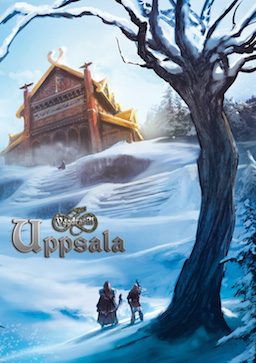 And this might be one of my favorite things about this system: there are gaps. Consciously or not, some elements are overlooked or simply not present. Some rules are confusing or neglected altogether (an absolutely crucial rule that was somehow left out of the Core Book was wedged into a corner in the second volume). The Yggdrasill forum on Cubicle 7’s website, though not the liveliest of communities, contains a lot of discussion about what various players are doing with the system — and what they’re interpreting or making up. Some of the rule confusion appears to result from errors in actual language translation: in one case, the French word puissant (also used in English) was translated as “Power” whereas in most other instances it had been translated as the Characteristic “Strength.” A favorite “error” of mine is the translation of a French word to “Presence” (a designation that doesn’t appear to exist in the English version of the game) that apparently was supposed to be translated to “Charisma,” another Characteristic. On the forum, someone who appears to be of some importance with Cubicle 7 declared that this itself is an error, that all “Magic” in Yggdrasill is supposed to be governed by the generic Characteristic of “Instinct.” But I (and others) disagree. This is not an error, but Instinct should govern Seidr Magic, Charisma (rightly) Galdr Magic, and Communication Runes (a “rule” that, incidentally, likewise is specified in the rulebook).
And this might be one of my favorite things about this system: there are gaps. Consciously or not, some elements are overlooked or simply not present. Some rules are confusing or neglected altogether (an absolutely crucial rule that was somehow left out of the Core Book was wedged into a corner in the second volume). The Yggdrasill forum on Cubicle 7’s website, though not the liveliest of communities, contains a lot of discussion about what various players are doing with the system — and what they’re interpreting or making up. Some of the rule confusion appears to result from errors in actual language translation: in one case, the French word puissant (also used in English) was translated as “Power” whereas in most other instances it had been translated as the Characteristic “Strength.” A favorite “error” of mine is the translation of a French word to “Presence” (a designation that doesn’t appear to exist in the English version of the game) that apparently was supposed to be translated to “Charisma,” another Characteristic. On the forum, someone who appears to be of some importance with Cubicle 7 declared that this itself is an error, that all “Magic” in Yggdrasill is supposed to be governed by the generic Characteristic of “Instinct.” But I (and others) disagree. This is not an error, but Instinct should govern Seidr Magic, Charisma (rightly) Galdr Magic, and Communication Runes (a “rule” that, incidentally, likewise is specified in the rulebook).
These rules exemplify the northern spirit quite well, in my opinion, though these rules don’t seem to be exclusive to Yggdrasill. It appears that a similar rules set is used for another game that Cubicle 7 has translated from the French, Keltia: The Chronicles of Arthur Pendraeg (historically fitting that a French game company is publishing an Arthurian rpg, much as French writers crafted most of the Arthurian Cycle itself). I wonder how the Keltia system interprets Yggdrasill’s Fate mechanic, however, which is one more mechanic tightly tied to northern culture.
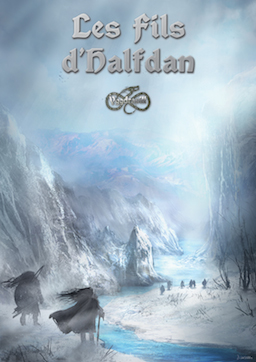 Every PC in Yggdrasill begins play with three Fate Runes, two with a positive aspect, one with a negative. The Runes are the actual runes, the alphabet beginning with the famous FUTHARK, of Norse culture. Interpretations of these Runes should figure into a character’s back story and goals, but, mechanically, they mean that another d10 can be added to a dice pool whenever the players determine that a situation is relevant to one of the character’s positive Runes. In my game, I use these Runes to guide some of my larger narrative structures. I even have bought a set of actual runestones, and, instead of rolling dice (Yggdrasill provides a chart for randomly determining a character’s Fate Runes at character creation), I have my players draw actual runestones out of a bag. My player who is running a Volva (a seeress skilled in Seidr magic) uses the actual runestones to cast her Seidr magic at the table.
Every PC in Yggdrasill begins play with three Fate Runes, two with a positive aspect, one with a negative. The Runes are the actual runes, the alphabet beginning with the famous FUTHARK, of Norse culture. Interpretations of these Runes should figure into a character’s back story and goals, but, mechanically, they mean that another d10 can be added to a dice pool whenever the players determine that a situation is relevant to one of the character’s positive Runes. In my game, I use these Runes to guide some of my larger narrative structures. I even have bought a set of actual runestones, and, instead of rolling dice (Yggdrasill provides a chart for randomly determining a character’s Fate Runes at character creation), I have my players draw actual runestones out of a bag. My player who is running a Volva (a seeress skilled in Seidr magic) uses the actual runestones to cast her Seidr magic at the table.
Okay, I’m tipping my hand here. This game is awesome. I’m enjoying it immensely. I think I’m becoming something of an “ambassador” for this game. I tried to run a session of it at Gamehole Con 2016, but absolutely no one signed up for it. I think this is because no one knew quite what I was selling. Either this or people wanted to play something more recognizable (Pathfinder Society and D&D Adventurers League appeared to be doing quite well!) or they wanted to sit down with a celebrity GM (who certainly wasn’t me!).
To finish this review, let me briefly survey the three succeeding products in the Yggdrasill line that have come out in English. These are The Nine Worlds, Kings of the Sea, and Uppsala. These are fantastic! At one time, I would not have said this about Uppsala, and after reading it I probably wouldn’t be yearning for English translations of “Halfdan’s Children” or “Hrolf Kraki”; I would have determined that the Yggdrasill line had been played out. Before I address just what I mean by this, let me say that The Nine Worlds I always would have approved of, and here’s why: it contains the cool stuff, the really important stuff if a GM is going to run not only a Viking story of heroic adventure but a numinous Viking story of heroic adventure.
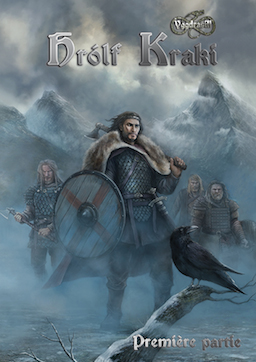 Well, truth be told, the Core Book has enough for that too — stats for Giants and Trolls and “Hel’s Warriors” and Margygr (a specifically northern version of the mermaid), but The Nine Worlds builds on all of this, providing brief surveys of all of the Nine Worlds and its denizens (including the Dokkalfar, “Dark Elves”). All of these beings (in this context it would be a misnomer to call them “races”) have distinctly Norse characteristics — the “dwarves” are Dvergar, for example, the only beings in the Nine Worlds who can craft permanent magic items, and none of the otherworldly denizens are suitable as player characters, though there are rules for crafting PCs that have the blood of these beings in their ancestries. There also are profiles of specific magic and legendary weapons out of the sagas. And Nine Worlds’s manner of presentation is quite entertaining: each chapter is preceded with a slice out of a scenario in which a number of heights-frozen travelers have huddled for shelter in an old man’s mountain hut; the old man tells stories and shares lore about the various worlds, and canny saga-readers might recognize that this “old man” is more than he appears. The last part of the book continues the “official campaign” begun in the third part of the Core Book, and here we arrive at a word about the structure of these publications.
Well, truth be told, the Core Book has enough for that too — stats for Giants and Trolls and “Hel’s Warriors” and Margygr (a specifically northern version of the mermaid), but The Nine Worlds builds on all of this, providing brief surveys of all of the Nine Worlds and its denizens (including the Dokkalfar, “Dark Elves”). All of these beings (in this context it would be a misnomer to call them “races”) have distinctly Norse characteristics — the “dwarves” are Dvergar, for example, the only beings in the Nine Worlds who can craft permanent magic items, and none of the otherworldly denizens are suitable as player characters, though there are rules for crafting PCs that have the blood of these beings in their ancestries. There also are profiles of specific magic and legendary weapons out of the sagas. And Nine Worlds’s manner of presentation is quite entertaining: each chapter is preceded with a slice out of a scenario in which a number of heights-frozen travelers have huddled for shelter in an old man’s mountain hut; the old man tells stories and shares lore about the various worlds, and canny saga-readers might recognize that this “old man” is more than he appears. The last part of the book continues the “official campaign” begun in the third part of the Core Book, and here we arrive at a word about the structure of these publications.
Kings of the Sea continues the precedent of developing the setting, providing new “rules” (in this case some guidelines for ship-to-ship combat), and then continuing the “official campaign.” And here is where I would have lost patience with this line if the official campaign hadn’t been such interesting reading. I know that this response might be particular to myself, being the Norse-phile that I revealed at the beginning of this review, but the “official campaign” in this series reads to me like a very entertaining saga. It’s that good. The tone of traditional saga narrative is stripped down, vernacular, and matter-of-fact, much like the typical mode of rpg adventure writing. So the two 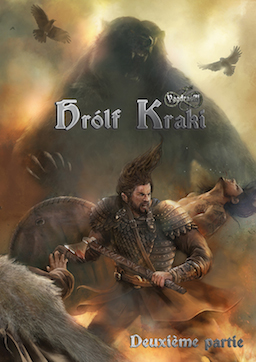 styles lend quite well to each other — if one is looking to read a good saga reproduction, or an entertaining rpg adventure, that is. In addition, the Yggdrasill campaign isn’t written quite like the adventures published by Frog God Games or Paizo, of which I have a slew, thanks to the inexpensive medium of PDFs and charity drives! In fact, if I’m dubious that any GM running a published adventure can convince a player that she has even the illusion of choice… Well, let’s just say that I’m not sure what a GM is to make of Yggdrasill’s way of presenting adventures. In a typical D&D adventure, player characters at least tend to end up in dungeons, which contain rooms, which in turn contain adventurers. This is not the case with the official Yggdrasill campaign, which seems way out there in the open and seems to suppose that GMs and players will somehow work together to wind up in the important places that the adventure feels it’s necessary for PCs to be. What I’m saying is that I’m not sure how any GM can run this thing (or any other published adventure by any other company, for that matter, though I know that people do it all the time — but this is an entirely different discussion!), but it makes wonderful reading! And I’m thankful that this apparently non-utilitarian indulgence is not punishing my pocket-book!
styles lend quite well to each other — if one is looking to read a good saga reproduction, or an entertaining rpg adventure, that is. In addition, the Yggdrasill campaign isn’t written quite like the adventures published by Frog God Games or Paizo, of which I have a slew, thanks to the inexpensive medium of PDFs and charity drives! In fact, if I’m dubious that any GM running a published adventure can convince a player that she has even the illusion of choice… Well, let’s just say that I’m not sure what a GM is to make of Yggdrasill’s way of presenting adventures. In a typical D&D adventure, player characters at least tend to end up in dungeons, which contain rooms, which in turn contain adventurers. This is not the case with the official Yggdrasill campaign, which seems way out there in the open and seems to suppose that GMs and players will somehow work together to wind up in the important places that the adventure feels it’s necessary for PCs to be. What I’m saying is that I’m not sure how any GM can run this thing (or any other published adventure by any other company, for that matter, though I know that people do it all the time — but this is an entirely different discussion!), but it makes wonderful reading! And I’m thankful that this apparently non-utilitarian indulgence is not punishing my pocket-book!
And that is the only reason why I recommend this whole series, Uppsala as well! By the time the reader gets to Uppsala, the “game” content has been entirely subsumed by the ongoing campaign. Well, that is if one discounts the very interesting “mini-essays” that detail the historical sources the writers used for this material and the issues that arose from the choices they made in crafting this part of the story. But if one is looking for additional game content, these mini-essays are not precisely that either. As I’ve already indicated, I enjoyed even this work so much that I hope that Cubicle 7 will continue to publish the Yggdrasill line from Septieme Cercle for as long as its French partner continues to develop it.
You have my interest up. Except that I’ve got scads of systems around here already, and lots of Viking sourcebooks dating all the way back to a first-run print of GURPS Vikings, which is chock full of great info even if I don’t use the system (and I probably won’t). Castles and Crusades has the Codex Nordica (http://www.drivethrurpg.com/product/130675/Castles–Crusades-Codex-Nordica), and lots of other games have Norse info as well, some of which you’ve pointed out.
So to really sell me, I’d have to be intrigued by the rules system. How does it play? The OSR systems I’m running for my kids seem to be working just fine, and it would be easy enough to flavor that game with Norse trappings if I wished to do so. How different are Yggdrasill’s combat and magic systems from those in OSR games?
Interestingly enough I was just writing about how much my own players dislike dungeons as adventure sites, preferring story-based adventures to site-based encounters. Sounds like this game is centered around my preferred method.
http://www.howardandrewjones.com/games/story-play-or-game-piece-play
Hi, Howard!
First, thank you for mentioning that you had just written about roleplaying. Popping over to your site, I noticed that I had more than one intriguing post to catch up on. I intend to weigh in on your latest question — dungeon crawling versus “television series” — soon! After writing this post, I reached out to Bob Byrne, too, because it seems to me that his style of play and my own are at odds and might be worth some analysis sometime. You seem to have started it on your own site. It certainly appears that what sells the most is at odds with how people like you and I actually play the games, Howard.
Second, thank you for word of Castles and Crusades Codex Nordica! I myself bought the inexpensive PDF of GURPS Viking 2e from SJG and I’ve been adapting material from it into Yggdrasill. I have GURPS Vikings’s “Viking Proverbs” and “Dying Well” on the players’ side of my GM screen! Good stuff for them to be pondering during play. I’m interested in collecting most any Viking-themed rpg (at Gamehole Con I dropped over $100 for a hard copy of the Northlands Saga Complete!). I’ve even been eyeing used copies of the old school Vikings supplement for Rolemaster and Hero System. Maybe I’ll do a survey of other Viking-related rpg products in time.
By the sounds of it, Yggdrasill is not necessary for your table. Like I said, it seems aimed at a very niche market of people who want to play “only” Vikings. I’m happy to explain the system more in depth to you, but I think I might do that in a private message. Now I’m over to your site to enter the discussion there!
Hey Gabe, yeah, the historical stuff in the background of that GURPS book was great. I think I’d have exactly those sections near me if I were running a Vikings game.
I used to own the Rolemaster Vikings supplement, and it, too, was really strong — though when I pared down my collection I decided I could spare it, but not my GURPS.
All those old I.C.E. supplements were good, but I think the very best one was for Robin Hood. I still regret letting go of the I.C.E. Egyptian module, even though I knew I’d probably never run anything in the setting. In addition to the great historical bits it had what I remember as a pretty good little essay on gamemastering.
I find this dialog between you two intriguing. Toss Bob Byrne into this and it would make for a fantastic series of discussions, I think.
I was actually looking at Yggdrasill last week while I was tooling around looking for additional source material. I tend to lean towards the Celtic-influenced material though, like Codex Celtarum for C&C, Mythic Britain for Heroquest, the Arthur legends as told by Cornwell, Whyte, Bradley, etc., but I do have Codex Nordica, The Northlands Saga, and of course the Norse and Icelandic Sagas.
I prefer the OSR gameplay over story gameplay when I’m a player. As a GM, which is what I do most of the time, I like to mix in quite a bit of story while maintaining the old school feel. I do think that my players would enjoy a game like Yggdrasill so I’ll probably pick it up at some point.
Incidentally, Gabe, you might like Saga of the Icelanders by Red Moose Games. It uses the Apocalypse World engine to drive the stories of you, a settler during the 9th and 10th century in Iceland.
Also, Howard, rumor has it that the Germanic/Celtic areas of the upcoming Lost Lands Campaign Setting are going to have a very good basis in myth, much like the rest of Lloegyr, and will be written by someone who is intimately familiar with Celtic/Germanic lore.
Patrick P.
Thanks so much, Patrick, for reminding me of Saga of the Icelanders! I had come across it before and hadn’t lately taken the time to search it up. Will do so now and add it to my new digital copy of Codex Nordica (and if I go ahead and grab ICE Vikings I’m essentially committed to that future survey!).
(And I also have been intrigued with the PbtA engine; would love to try it sometime!)
So, Patrick, since you recently were looking at Yggdrasill, did you also happen to run across Keltia? What do you think?
And where is Bob anyway? 🙂
This looks fantastic, just the sort of thing I would like to run or be a player in. Thank you for the heads up.
Bob is barely keeping his head above water at work lately but will weigh in shortly. I mean, that guy comments on everything. Yeesh!
Gabe – I had not, but I’m looking at it now! I think I’m going to have to pick up a copy of it as well as Yggdrasill, if not to play then for the story/source material.
Thanks for pointing it out!
I love stuff like this, 85% real history with 15% myth/magic mixed in. I’ve been slowly picking up a few old GURPS books for such settings.
Zhern, please tell me more about this Germanic/Celtic Lost Lands supplement; I’m hungry for more stuff to make my Germanic tribesmen into Roman boogeymen! There’s tons of Celtic stuff out there, but very little about early Germanic tribal culture…
Mick.
@Mick – it isn’t necessarily a dedicated Germanic/Celtic Lost Lands supplement. When the Frogs release the Lost Lands Campaign Setting Box Set (hopefully in 2017, likely early/mid 2018), it will have details about the Germanic/Celtic-influenced areas of Lloegyr. I believe the writing for that area will be done by Brian N. Young, who has written the different Castles & Crusades Codex books for Troll Lord.
My information is based on hints dropped here and there by different people in the “know.” Keep in mind that it very well could change but I think there is a very high likelihood it will not. Young did an excellent job on Codex Celtarum and Codex Germania and I’m hopeful the same result will come from his involvement in the Lost Lands Campaign Setting.
@Gabe – I picked up PDFs of Keltia and Yggdrasill. I plan on getting the rest of the supplements for both after I finish (more like find time) reading these two.
Patrick/Zhern
That’s great, Patrick! I don’t have any of the Keltia stuff and would appreciate a review! (I dropped this week’s rpg money on the other Northlands products mentioned here and on Castles & Crusades – Howard pointed me to a convincing review). Spent tonight sketching out the final dungeon for my Pathfinder game. Yeesh! Level 11 players! So much going on! ?
I will endeavor to do so, Gabe!
Patrick
The Cubicle 7 games are now featured on Bundle of Holding, including Qin, Yggdrasill and Keltia, including the supplements for all of them.
https://bundleofholding.com/presents/Cubicle7
Might be a good opportunity to pick them up for really cheap (and for a good cause).